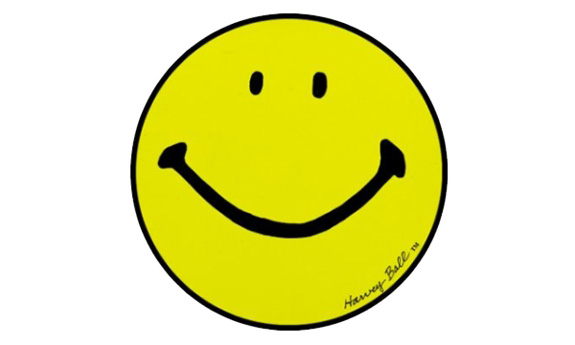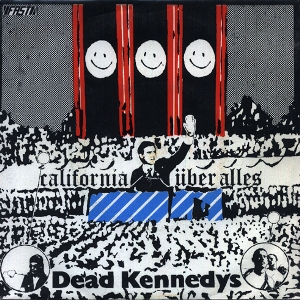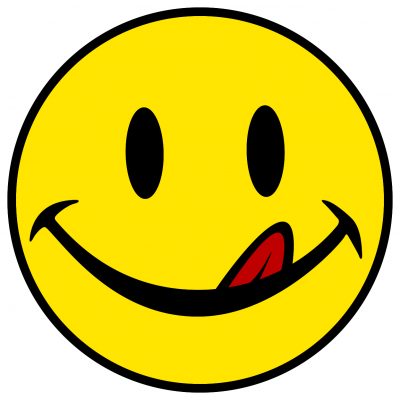The Smiley Face by Vivian Le
In 2004, Monika Minar was working at a law firm in Kuala Lumpur, Malaysia, specializing in international intellectual property and trademarks when a smiley face came across her desk. The Kumon institute was being blocked from registering their very unique logo, which isn’t exactly smiley, and honestly looks a bit sad, but regardless, the ‘O’ as a face was contentious.

To understand the case, she had to dive into the origins of the smiley face, but this wasn’t the first or last time the smiley face has been at the center of lawsuits, involving companies like Joe Boxer and Walmart.
It’s such a simple icon that it’s hard to say for sure, but the smiley face as a pair of black eyes and an upturned mouth on a yellow background is generally traced back to an American graphic designer named Harvey Ross Bell. Half a century ago, he was hired to create a graphic that would reassure and cheer up bewildered workers at an insurance company after a series of arduous mergers and acquisitions.

The State Mutual Life Assurance Company slapped it on posters, buttons, and signs, hoping to encourage the staff to smile more. The specifics changed and the smiley evolved, but “according to Bill Wallace, Executive Director of the Worcester Historical Museum, the authentic Harvey Ball-designed smiley face could always be identified by its distinguishing features: the eyes are narrow ovals, one larger than the other, and the mouth is not a perfect arc but ‘almost like a Mona Lisa Mouth.’”
From there, various parties began to use and lay claim to variations on the design, including owners of Hallmark card shops in Philadelphia and a journalist in France named Franklin Loufrani. It was his family business that would spread the “Smiley” around the world, printing it on t-shirts but also licensing it to other companies, and making legal complaints when they saw competitors using similar designs. At the same time, though, Franklin’s son Nicolas concedes that the basics of the design are ancient, pointing out a cave painting in France with a similar stick-figure face that dates back thousands of years BC. One has to wonder how a family so intent on protecting a design can also so easily recognize its long history and universality.

Meanwhile, variations on the smiley have appeared on clothes and art. It’s appeared everywhere from the Dead Kennedys single art to the now-classic Watchmen comic series, later turned into a feature film. Watchmen artist Dave Gibbons explains the appeal, “It’s just a yellow field with three marks on it. It couldn’t be more simple. And so to that degree, it’s empty. It’s ready for meaning. If you put it in a nursery setting… It fits in well. If you take it and put it on a riot policeman’s gas mask, then it becomes something completely [different].”

The fact that the smiley face is such a ubiquitous symbol actually helped Monika Minar’s defense against Loufrani in his trademark opposition. Because the smiley face has been used in so many ways and in so many different contexts, the average person would never associate as the trademark of Loufrani or the Smiley Company.





Comments (29)
Share
Love the show. Listen all the time. Another great episode.
My 9th grade English teacher–a self-proclaimed flower child of the ’60s–had told us that the peace symbol is the footprint of a dove (in a circle). Although that is apparently apocryphal, I do like that explanation. (Of course, that could be a footprint of any number of bird species…)
There’s actually another Mad Magazine connection in this episode. The Vietnam-era Al Jaffee strip Hawks & Doves centered on Private Doves finding different ways to display a peace symbol, much to the annoyance of Major Hawks.
And a bit more color on Bayard Rustin: Rustin was a native of West Chester, Pennsylvania. In 2006, he was finally made the namesake of a new high school in the district. Rumor is that he was in the running for naming an earlier high school in the district but it was blocked due to him being gay. Thus, the district ended up with the redundantly named “West Chester East High School.”
Errr since when has this been the Peace Symbol? It’s the CND badge and that’s it! Well it was growing up in 1970’s Britain, punk, Anti Nazi League and CND. Am I the only person who has only ever associated the icon with CND? Funny since the next item featured the DK s – didn’t they have a logo based on their initials? Love the podcast, Fresh Fruit for Rotting Vegetables :)
Dear fellow beautiful nerds
I love this episode and I’m taking Roman’s request to submit a ubiquitous icon for further diving.
I love the Biohazard symbol. I love that it looks like absolutely nothing but a bunch of circles and squiggly lines but also instantly conveys “this will fuck your shit up stay away”. I’d love to know how it was designed.
We actually did a couple of articles on this, so here you go:
https://99percentinvisible.org/article/biohazard-symbol-designed-to-be-memorable-but-meaningless/
https://99percentinvisible.org/article/beyond-biohazard-danger-symbols-cant-last-forever/
When I heard “semaphore” in the first segment my first association was how the lifeguards communicated with each other at Ocean City in the late 1960s and 1970s when we were there for family vacations.
I always thought that’s what all lifeguards did but the show implied it was a local thing.
Wonder if there is a name or episode for that idea, things you know local that you think are global and they are not. Growing up in Baltimore I thought all bowling was duckpins, but that too was regional. Likewise, from FM radio then I was sure Little Feat was a national band but turns out they were big in Baltimore and one other city.
Anyhow, great show. I was worried there would be no Gump reference in the Smiley Face segment, whew
Icons: the hamburger for website menus?
Somewhat related to icons: I recall reading that clocks for sale used to be stopped at something like 10:10, with what turned out to be an apocryphal explanation about representing the time of a historical event, but more likely just not obscuring the maker’s name. But no such logic applies to clock icons or clip art. However, it seems most of those show both hands at or above the 9-3 line, and almost none show more than one hand below it. Is my perception correct? And, if so, why?
Less related, but: a frustration in reading some blogs is inconsistency in directional page navigation. “Next” and “previous” may mean opposite things on different sites. Still others use a variety of word labels. (“Older” and “newer” make the most sense.) Providing a number line is the most clear, but often annoying because you get a limited set of numbers to click, and the only alternative to slowly clicking back, say, two at a time, is a double arrow sending you all the way to one end. As blogs live longer, that’s less and less useful. Also annoying: Providing a number line but also having single arrows to move one page at a time — why the redundancy? And number lines that are so tiny it’s difficult to consistently click the correct spot on phones or tablets. (Indeed, I’d be interested in any look at blog design changes — the death of blogrolls, the birth of continuous scroll, why Geocities sites had such hideous layouts and why most sites don’t now.)
An intersting case is the Burger Menu Icon, thought to be ubiquitous but is actually not. Have you perhaps talked about it before..?
I would love to know who is behind the images on the care tags for clothing. They are too small to discern, and even with a magnifying glass I can’t figure out the meaning.
Great episode. Thanks.
Thanks for another great episode.
Just wanted to add that the song »On The Road from Aldermaston« by Matt McGinn appears to be based on »The Ballad of Roddy McCorley« from the 1890s which tells the story of the Irish nationalist’s death after being allegedly involved in the the Battle of Antrim.
Your discussion about the trademark issues around the smiley face reminded me of a story that’s played out in Australia in recent months, with a trademark issued on the Aboriginal flag and a non-indigenous clothing company that holds the license to use it issuing cease and desist orders against businesses run by indigenous people. See for example https://www.sbs.com.au/news/indigenous-companies-told-they-can-t-use-the-aboriginal-flag-over-copyright-concerns
I greatly enjoyed this episode – but had no idea how much until a question popped up in Trivia last night. “If you were going to communicate in semaphore, what would you need?” Clearly our Trivia Host is as much of a fan as I am!
I’d love to hear some history behind some ubiquitous sound effects. Why does everyone KNOW what a spider sounds like despite them never actually making noise? Why do we NEED to throw the sound of actual bowling pins over top of people being knocked over. Why does every gun have several invisible metal D rings attached to it that make noise anytime they’re moved?
There are so many weird noises that we kind of require in media to make stuff “make sense” despite have zero basis in reality.
I thought the power symbol was supposed to be a 1 and a zero joined together to look like a stylised light switch (the old chrome ones with a protruding stick the can be either up or down). I am surprised the visual similarity was not noted.
Great show! Thanks. As a youngster in the 1970’s I heard an (apparently fictitious) origin story for the peace sign: Derived from the “Make Love Not War” slogan, it depicted a man and woman in the missionary position inside a circle.
Something on the shaver socket icon. It’s really dreadful -how did they get away with that one.
I grew up during the 1960s. To me, the name for the peace symbol is “the drooping cross.” I was surprised that this name was not mentioned in the episode. I can’t tell you anything about the background of this name, sorry.
I was struck for the call of icons at the end by two which are often used and yet are well out of date. I work as a locksmith and keep seeing businesses use keys which stopped being used in the 1800’s for advertising images. So called warded keys were used in European castles. However, now those same castle keep them as symbols not as working keys.
The other dated symbol is that of indicating to somebody that there is a phone call across too much distance to noise to say it. You will see people simulate dialing a rotary phone while holding up a handset to their face. Granted, those phones exist but probably more in museums than in use.
Enjoy the show every time.
Love the hidden binary message in the article. Nice touch. ✌️❤️♻️
Another excellent episode! I would add that Captain Frederick Marryat standardized the navy flag signals with A Code of Signals (1817) and went on to compose the most wild and obscure flower code book, The Floral Telegraph (1836). Shameless plug for those interested in Marryat or flowers-as-code
https://www.cambridge.org/core/journals/victorian-literature-and-culture/article/captain-frederick-marryat-and-the-floral-telegraph-or-a-forgotten-coder-and-his-floral-code/D0F8F84EC1FB389B5B9360EE7CC2BF26
Also, Symbol Sourcebook by Henry Dreyfuss is another great example of an attempt to universalize design and code across languages and disciplines in the 1960s.
I’m very curious about the male and female symbols. There’s got to be a good story there.
Hey, there’s an important typo in the transcript:
” Coupled with the D, this flipped figure could stand for “unilateral disarmament,” too, Holtom’s ultimate dream.”
The audio says his dream was ‘universal disarmament’.
Doing a tacky and leaving a negativism comment when 99% of the time I enjoy the podcast yet don’t comment.
It just seemed this was painfully self explanatory material / common knowledge.
What 99pi listener wouldn’t glance at an on off symbol and see the binary? The peace symbol has been explicated ad infinitum. The info on smiley faces: “Did you know this is a versatile symbol with different meanings depending on context?” Mind blowing.
IMO this was a weak sauce Wikipedia skim.
Sorry! Decided to embrace the horror of leaving a negative comment and just go for it. Hope it is apparent that this criticism on has any definition as I thought this episode stood in contrast to your usually excellent work. This was 99 lite.
@romanmars @99piorg
If you turn the peace symbol upside down, it looks like 10:09:35 This is the time that timepieces are set to in advertising
https://chamblee54.wordpress.com/2017/01/06/why-the-time-is-always-100936-4/
Am I the only one who can’t hold an elevator door open because the symbols for door open and door closed are confusing? In fact, I usually get them exactly mixed up because to me the closed symbol looks like the doors are opening, and vice versa.
Would love to see more in this series!
First off, love this pod cast and I’m still trying to get to the current episodes after starting all the way back at Episode 1. I hope you are able to keep going. I was also interested to hear this episode because of the power symbol, I knew where the symbolism came from, but I didn’t know the history, which I knew you would be able to research and share.
That’s why I was surprised to hear that the O and I related to binary code, which is not my understanding at all. Although the standby symbol combining the two is more recent and as reported relates to an intermediate power state, the O and I are much, much older than binary code.
It was my understanding that the O and I came from the relationship between electricity and plumbing. Think of cables as pipes, and the electricity as something that flows through those pipes. The O and I relate to a valve, and specifically a butterfly valve. If you look down a pipe, with a butterfly valve closed, it closes the pipe, stopping flow and turning it off, i.e. O. When the valve is open, it looks like a line running across the pipe, flow is enabled, or on, i.e. I. It would be great if this could be confirmed or debunked!
Keep up the good fight.
I have always thought the power symbols of O and I should be opposite. In my mind an O represents a completed electrical circuit (ON) and the I represents an interrupted circuit (OFF).